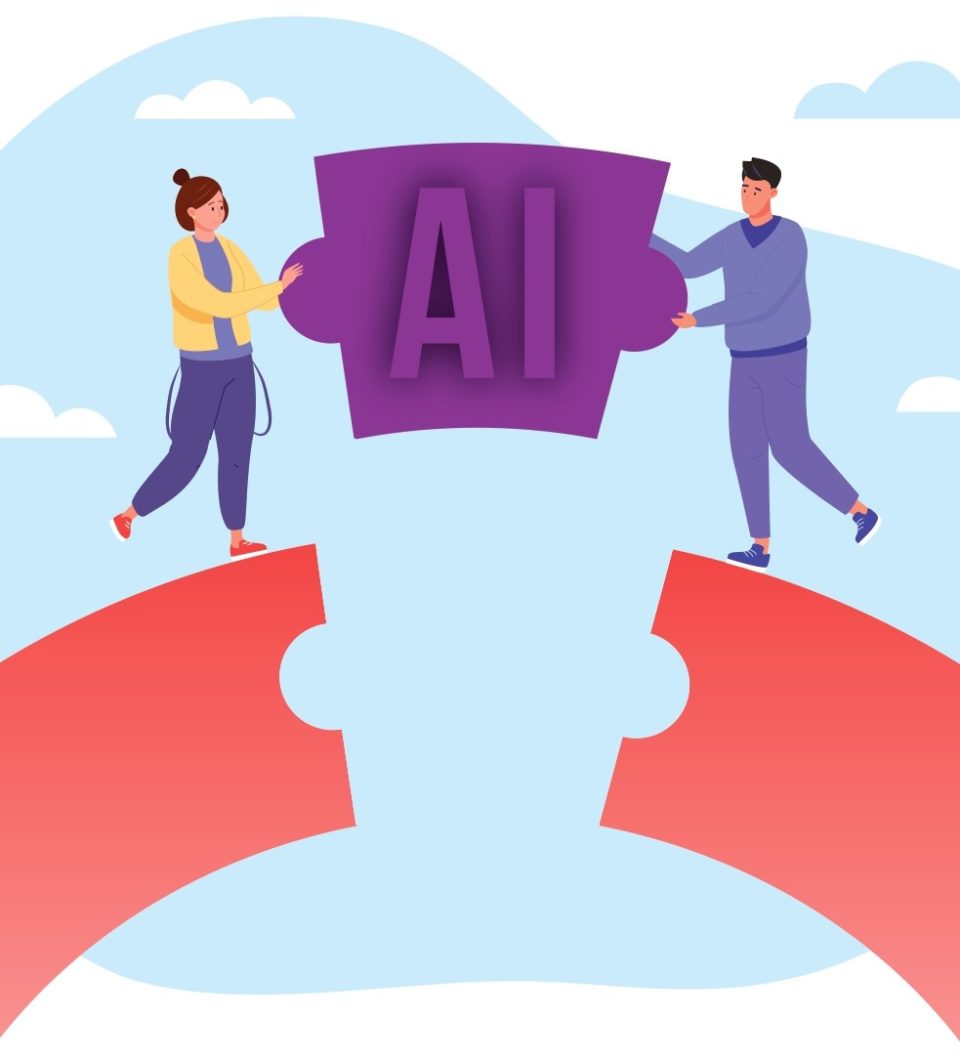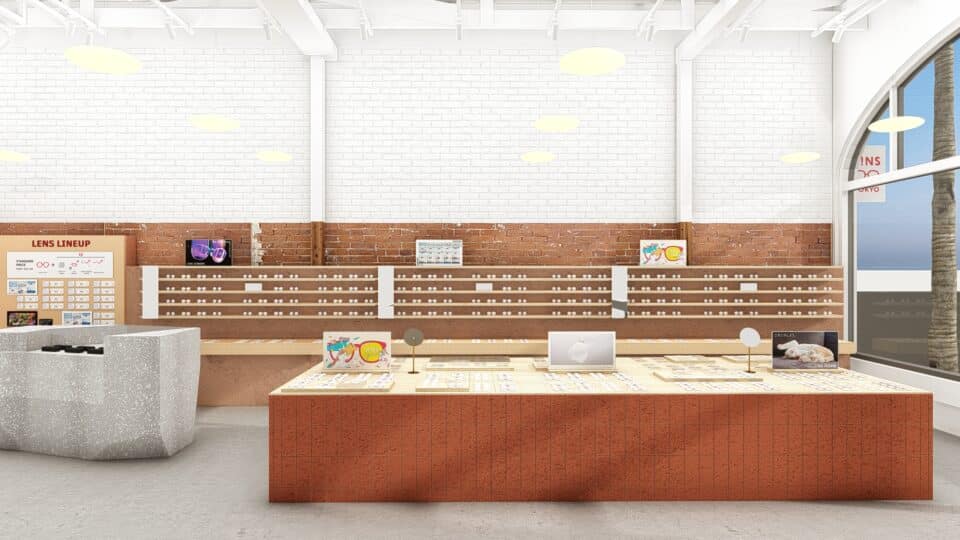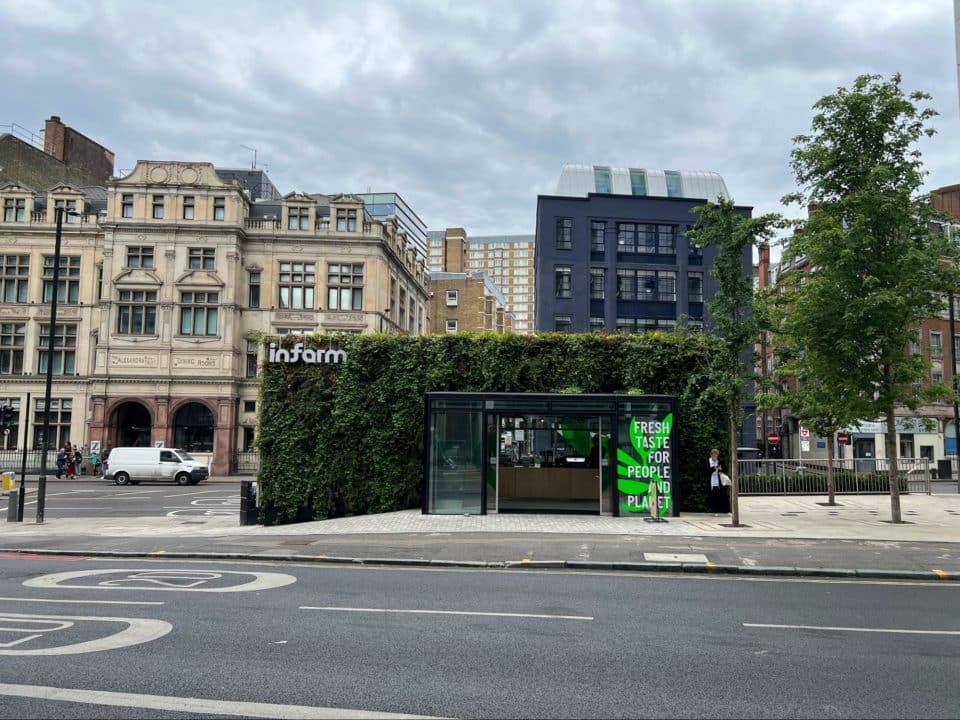The most wow new tech initiatives in retail – April 2019
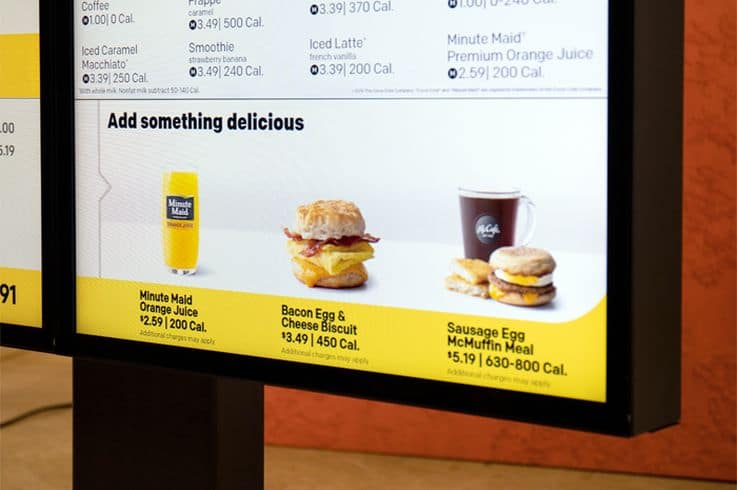
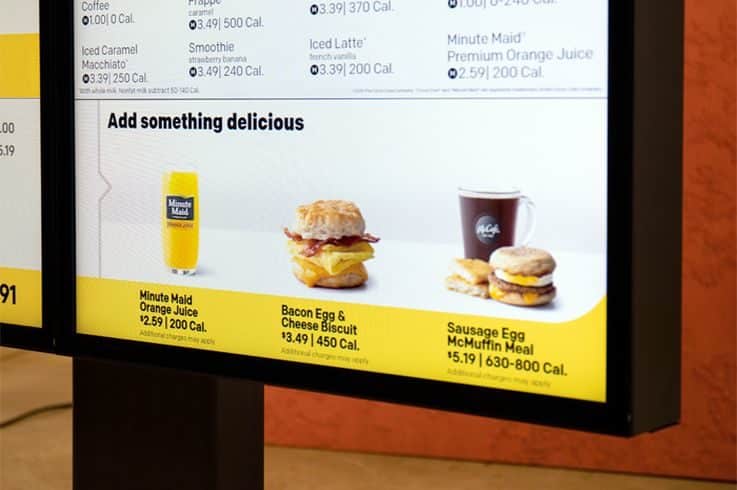
Sometimes tech can seem like a scary thing. After all innovation often brings with it a threat of automation, of job losses, of a move away from human interaction. But tech can also be a powerful enabler as this month’s wow new initiatives prove. From making the world more accessible to helping retailers be more personal these are the ideas that we can see shaping the future.

McDonald’s AI-powered menu options
What is it?
McDonald’s intends to use AI to suggest context-specific items on its drive-in menus. The company has acquired Dynamic Yield, an AI start-up that specialises in personalisation. It will use data about what customers buy to predict what others might choose. It can also tie this data to certain conditions such as the time of day, weather, amount of traffic and more to serve up the recommendations most likely to make people buy.
Why you need to know
McDonald’s serves a huge number of customers everyday across the globe. Its move into personalisation builds on masses of data that the company collect during these transactions. As a result, McDonald’s could start tweaking its menu and offers for each individual store. If one space has a large number of customers stop for a coffee before work, then it could promote combo deals that also include a complimentary item. Or if the weather is good it might push McFlurry’s as a suggested purchase.
McDonald’s is starting off by using the tech to change up the drive-in menu to recommend the best products based on the conditions at the time. But in the future, it will likely be used everywhere from the company’s app to the self-service kiosks in store. By taking the guesswork out of promotions, McDonald’s is increasing the likelihood of customers buying more because they’re actually things they might want.
Google’s bid to power AI without handing over data
What is it?
Google is taking on privacy concerns with its new open-source software, TensorFlow Federated. While traditional AI training systems typically send data back to a central server in order to learn, TensorFlow Federated uses the federated learning system. As such, it uses your data to learn on the phone or tablet itself. Only the lesson is sent back to the server, rather than the data that was used to teach it. For example, the system can suggest replies to emails based on its existing algorithm and the data on your phone. It will then send a summary of what it learnt back to the creator.
Why you need to know
This may well be the future of AI. At present we’re caught between what this tech can do and our personal privacy concerns. More and more customers are uncomfortable with giving away too much data to companies, especially as often it contains information that isn’t needed to perform the service they asked for. But AI needs lots of data in order to learn and get better.
Federated learning is a way to marry these two issues – it gives AI access to the volume of data it needs to learn but lets customers keep their individual data private. By creating TensorFlow Federated, Google isn’t just helping improve its own products and services. As the software is open-source other developers can also use it in for their own AI projects knowing that they can reassure users about any privacy concerns. This includes retailers.
[youtube https://www.youtube.com/watch?v=FCwMUxBsqVE&rel=0&controls=0&showinfo=0&w=737]
IKEA’s free accessibility 3D-printables
What is it?
IKEA Israel has come up with a series of free 3D printable components that can be used to make its furniture more accessible for people with disabilities. Called ThisAbles, the range includes 13 designs from handles to shelf clips to switches. IKEA is also inviting customers to submit their own ideas or problems around accessibility.
The designs are available to download from anywhere in the world for printing at home. Many require little to no assembly. Even those without their own 3D printer can benefit as IKEA has put 3D printers into its stores for this very purpose.
Why you need to know
We love love love this. It’s a great example of how a company can make itself more useful to customers. It also makes all customers feel valued and wanted by IKEA – something that isn’t always the case for people with disabilities when it comes to retailers. As a result, they may feel closer to the brand and therefore are likely to be more loyal.
As well as the ThisAbles designs, the site also lists all of the current IKEA products that are already easily accessible. Again, this serves as a reminder that IKEA is a company for everyone. IKEA is also learning through the project though.
For a start these additional elements help highlight where its designs can perhaps be improved in the future to make them more accessible without the need for such additions. It also can gather input from customers about the problems they have with accessibility, which again can feed into its designs.
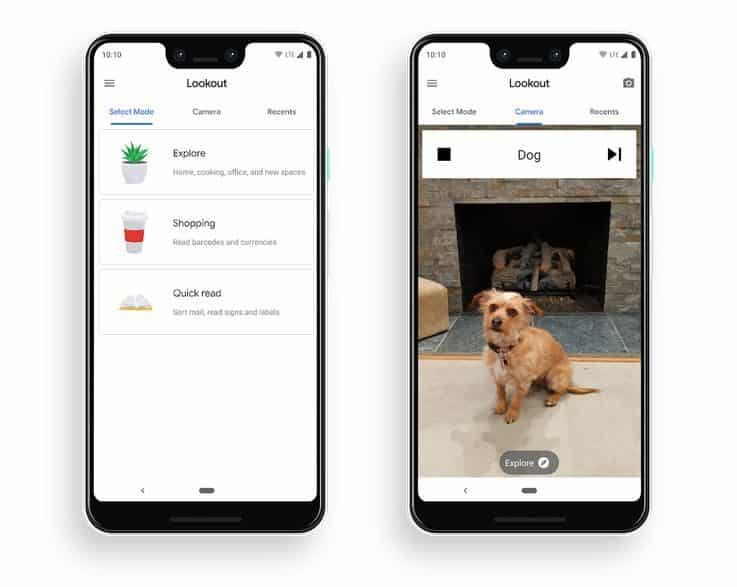
Google and Microsoft’s AI bids to help the visually-impaired
What is it?
Both Google and Microsoft have separately been working to help the visually-impaired through AI. Google’s Lookout app uses a person’s smartphone camera and AI to describe the environment around them out loud. Meanwhile, Microsoft has made some updates to existing Seeing AI app, which works in a similar way to Lookout. Seeing AI can now also describe the content of photos to users.
Why you need to know
As evidenced by IKEA Israel’s ThinkAbles programme too, accessibility is becoming more and more important to major brands. Everyone has the right to the best possible quality of life and tech can be a real enabler when it comes to disabilities.
For retailers, both Lookout and Seeing AI make it easier for the visually-impaired to shop. While there are some limitations to the tech at present – the systems are constantly learning and therefore won’t always be perfect when it comes to identifying what is around them – it’s nice to think they’ll reach a point where they could determine different products on rails and describe them.
The ability for Seeing AI to also offer a similar option with photos helps make things like advertising more accessible to the visually-impaired as well. In addition, this sort of tech could be useful when it comes to developing image recognition solutions. If AI can accurately recognise and describe a product, then it should also be able to recommend other items that are similar.
3D printing electronics onto fabrics
What is it?
Scientists in China have come up with a way to incorporate electronics into fabrics using 3D printing. The flexible fibres were printed directly onto the fabric and can be used to draw patterns, pictures and lettering. The fibres are able to turn movement into electricity and store it.
Why you need to know
Wearables (in terms of smart clothing) haven’t taken off en masse yet, but the idea of clothes that can do more is still of interest to many. At present most approaches involve sewing electronics into clothes, but this is time-consuming and costly.
The ability to 3D print them instead could be a real saving, especially as in this experiment the nozzle used for printing is compatible with existing 3D printers. It is a technique that could also be used at scale – a vital element of turning something like smart clothing into a mainstream feature. We expect to see much more experimentation around this idea.
[youtube https://www.youtube.com/watch?v=bTHMg0d4lZY&rel=0&controls=0&showinfo=0&w=737]
AI that turns 2D photos into 3D models
What is it?
Start-up Threedy.ai has come up with a process for turning 2D photos into high-quality 3D models. It uses AI and computational geometry to create the model. The company says it takes a fraction of the time that other options out there do, and at just a third of the cost.
Why you need to know
This has all sorts of implications for retail. As more and more of us shop online, product imagery has become increasingly important. We want the best possible idea of what a product looks like, how it might fit or work, before we buy.
Images and video are the only way to do this online as we cannot physically interact with the item as we would in-store. Increasingly retailers are including 3D product images, 360-degree viewing and even AR to show us how the thing we’re looking to buy might look on us or in our homes.
But good quality assets can be costly and time-consuming – something that doesn’t always lend itself to the likes of fast fashion where new products drop all the time. The ability for a retailer to take a 2D product image and have it automatically turned into a 3D model could be a real boon then. It could also make it easier for retailers to move into offering AR, VR and virtual shopping experiences by ensuring an affordable supply of the necessary 3D models.

Magic Leap’s plan to merge digital and physical worlds
What is it?
Magic Leap is a leading force in the AR world. Now it wants to build the ‘Magicverse’ where different digital layers exist over our physical world. Each layer might serve a different purpose from entertainment to mobility. Essentially every place in our physical world would also have a digital equivalent made up of different layers which can be accessed via AR technology.
Why you need to know
The Magicverse idea is based around merging the digital and physical worlds to a far deeper level than we do today. It’s some way off – the project relies on huge investment in new high-speed networks and more – but it could be Magic Leap believes the Magicverse will be an economic benefit to communities all around the world.
For retail it could help brands create new experiences that aren’t possible, or aren’t cost-effective in the real-world. Instead of constantly revamping your store design, you could just design new layers so that customers could put on a headset and experience something new every time they arrived. Or you could stick a store in the middle of a park just by designing it as a layer to be accessed digitally.
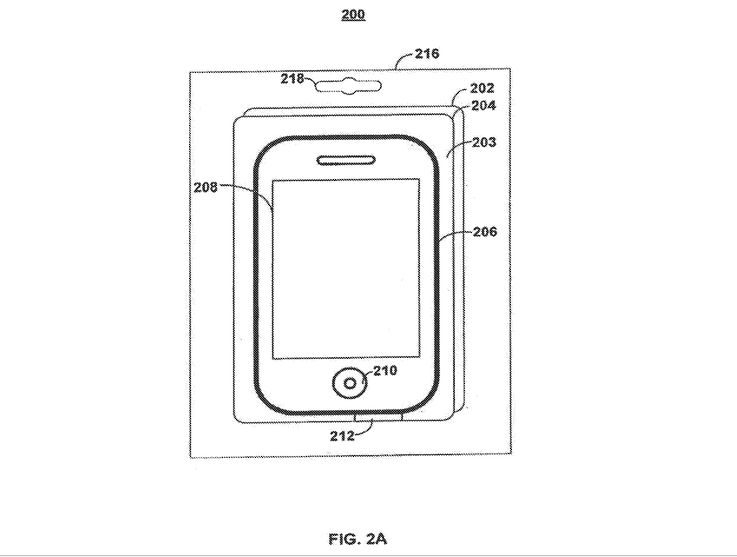
Apple’s bid for interactive packaging
What is it?
Apple has filed a patent for high-tech packaging that would allow devices to be used while in their boxes still. This could be in terms of charging them up or to push software updates, so they’re ready to use out of the box. It could even allow for the device to be interacted with while in the box opening up all sorts of new options for customers. The patent builds on ones already filed by Apple back in 2007.
Why you need to know
Clearly the idea of tech-enabled packaging has been on Apple’s mind for some time. While there are hurdles to overcome – the cost of producing this ‘active’ packaging and how to safely dispose of it – it could shake up how we think about buying electronic products.
For example, what if Apple’s boxes of the future had a transparent quality so you could see the device inside them. And what if the active packaging meant they could all be used to show adverts? If every product was a useable display, could it remove the need for in-store digital screens? Could there be a way for customers to access device info or tutorials without opening the box?
There’s more though. The patent mentions using the active packaging to broadcast the location of each product. Perhaps this could help with stock management? Or theft? The product would also know if its box was moved so again this could trigger it to display some messaging or advertising to customers.
It’s also rare to be able to walk into a store, buy a new phone and walk out using it. But if Apple can charge its phones and make sure they updated while still in the box then it’s possible for customers to get started right away. With instant gratification very much a driving force in many of our decisions, this could tempt some customers over the line – especially if you could transfer all your old data over while in-store.
VR that lets you smell virtual products
What is it?
NEC Corp has come up with a virtual reality system that not only lets you see products but smell them too. The company believes the concept will be used to allow customers a more realistic virtual shopping experience.
Why you need to know
It may sound a bit unnecessary, but you shouldn’t underestimate the power of the five senses. We don’t only shop based on sight, but also touch, sound, smell and even taste. If you’ve ever been in a grocery store and smelt fresh bread, you’ll know how compelling it can be in making you want to buy some. It’s not just the grocery market that could benefit though. Perfume brands in particular may find VR that taps into scent valuable when it comes to converting customers online.

